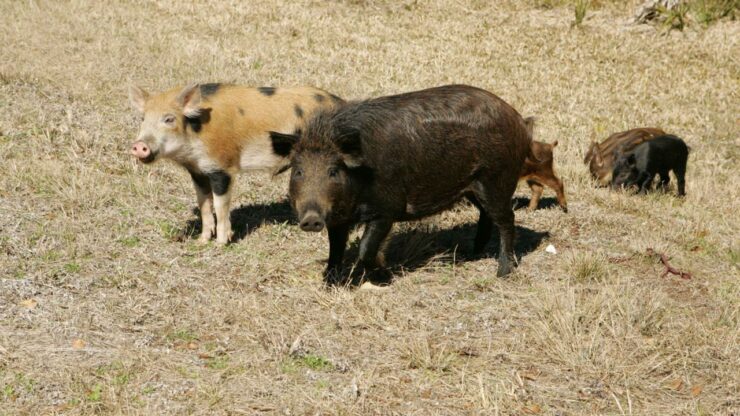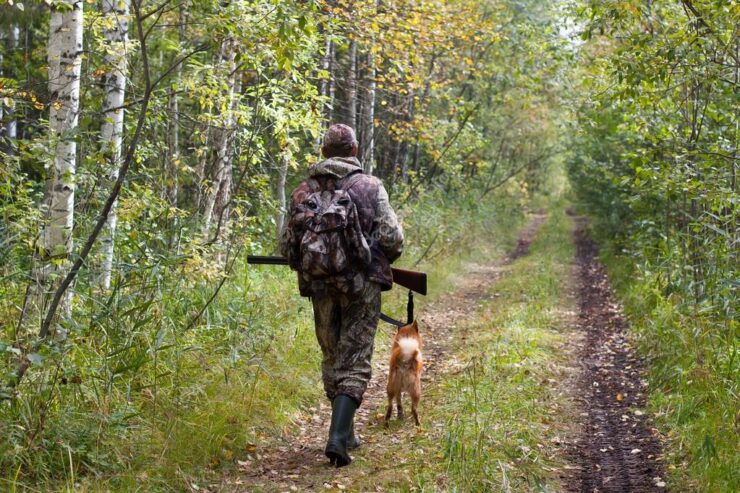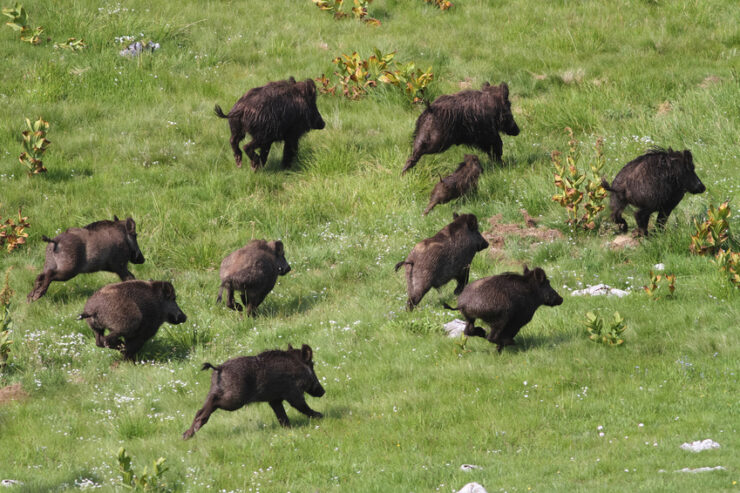As boar hunting continues to take leaps and bounds throughout the world of big game hunting, more and more hunting clubs and ranches are turning to management practices that produce trophy boars. Long dead are the days of excitement created by the sight of just one wild hog. Today hunters are forever searching for bigger and badder boars and techniques that will help produce them.
Following are seven steps to managing and growing multiple trophy class hogs.
1. Supplemental Feeding
2. Pass on Juvenile Hogs
3. Equalize Sow to Boar Ratio
4. Create Nesting Areas
5. Improve Genetics
6. Castration Program
7. Give it Time
1. Supplemental Feeding
Management areas must be able to support boar populations. Protein intake is key when producing boars that push the limits in both tusk and weight size. Adequate and constant nutrition must be provided year round for optimum growth levels to be reached. Food plots, automatic feeders, and the propagation of soft mast trees will all help insure that proper and maximum growth levels are attained.
2. Pass on Juvenile Boars

Wild boars do not reach full growth until they are eight years old. Trophy characteristics begin to show around four years of age. Boars that are harvested before the age of four do not even begin to display the tusk quality and body size that they are genetically capable of producing. Young boars should be allowed to grow without any hunting pressure whatsoever. Instead, large mature hogs should be harvested in the eight year old range. Multiple trophy class boars will never be seen if young males are continually being harvested.
3. Equalize Sow to Boar Ratio
It happened with whitetails and now it is happening with hogs. The false management theory of not harvesting any sows because they give birth to boars. This theory is effective only in areas where hog population numbers are minimal. However, it actually hurts trophy boar production in places where large numbers of animals exist. A proper number of sows must be harvested each year to keep the overall population below what the land is capable of feeding. I believe that as in deer, the ideal ratio of boars to sows should be 1:1. Hunters who managed deer populations to this ratio witnessed an explosion of trophy bucks in the management areas. Doe and fawn health and overall growth also increased. The same effect can and will happen in wild boar management areas if the ratio between sows and boars is equalized.
4. Create Nesting Areas
geneticsWild hog sows will only have and raise their young in places where they feel absolutely safe and secure. The creation of nesting areas by hunters gives both sows and boars dwellings to raise young and remain hidden. Cutting down trees such as cedars and using them to create brush piles are ideal ways to create nesting areas for wild hogs. These man made brush piles will ensure new-born boars are protected from predators in times of vulnerability. They will also entice sows to stay in selected areas for an extended period of time.
5. Improve Genetics
The difference between a floppy-eared feral hog and an awesome looking true wild boar is merely blood lines and genetics. Increases in size, tusk length, hair length, and attitude all can be attained through improvements in blood lines. There are many ranches dedicated to raising genetically pure breeding stock for herd improvement. Ask about breeding programs and always request to see the breeding stock before purchasing pigs.
6. Castration Program
The production of barrs through a trapping and castration program is a valuable tool that can help create a large inventory of trophy hogs in a relatively small area. Boars will fight to the death over the breeding rights of a sow in estrus. Castrated boars have no urge to breed and at the same time grow at an accelerated rate physically. Barrs also lack the strong gamey odor of boars and are great meat hogs at any size or age.
7. Give it Time
Patience is the main factor in making the entire process work. After three to four years of management, you will be amazed at the number of large boars you see. After eight years you will see boars that take your breath away. Time is needed to produce these monsters and make seeing them common-place.

Each step works hand-in-hand with the other to produce trophy wild boars. If one ingredient is left out, then the program may not work. However if all are followed, then you will be well on your way to producing record-book wild boars.

